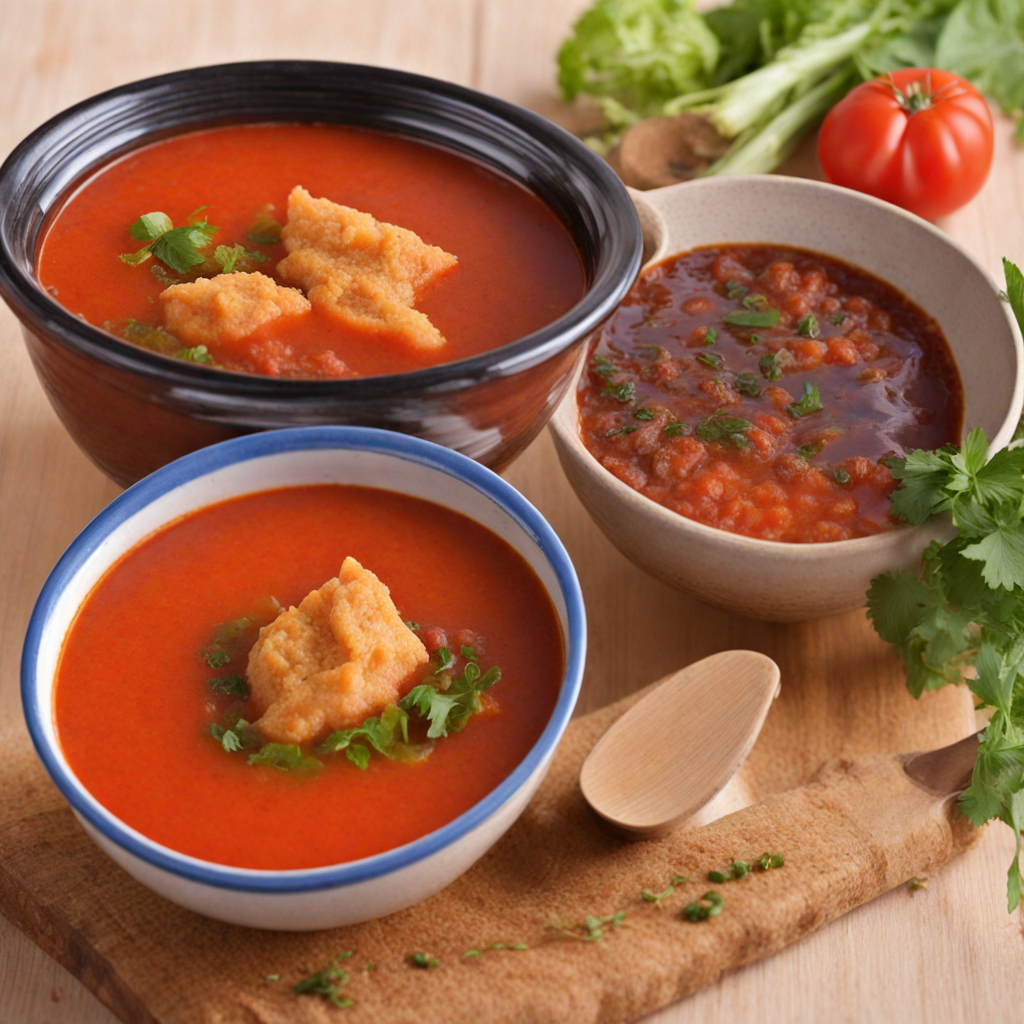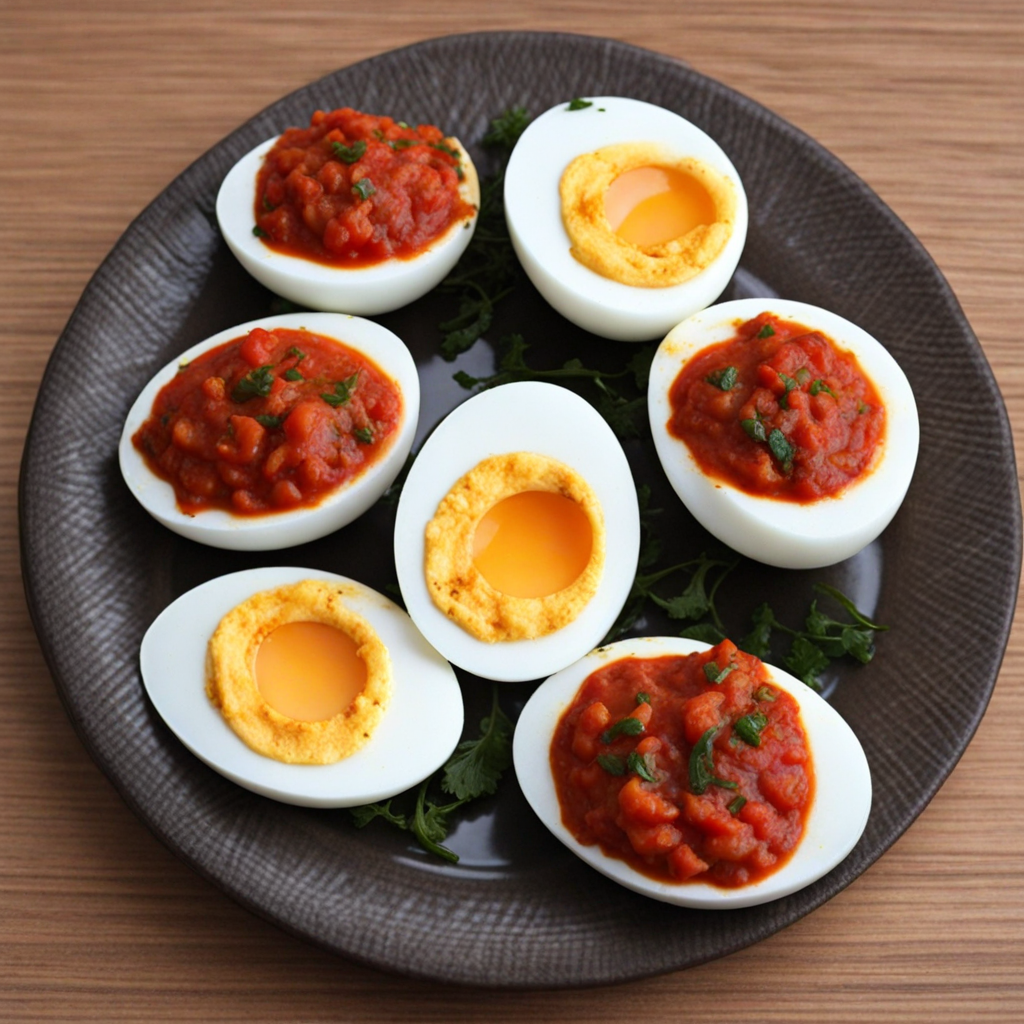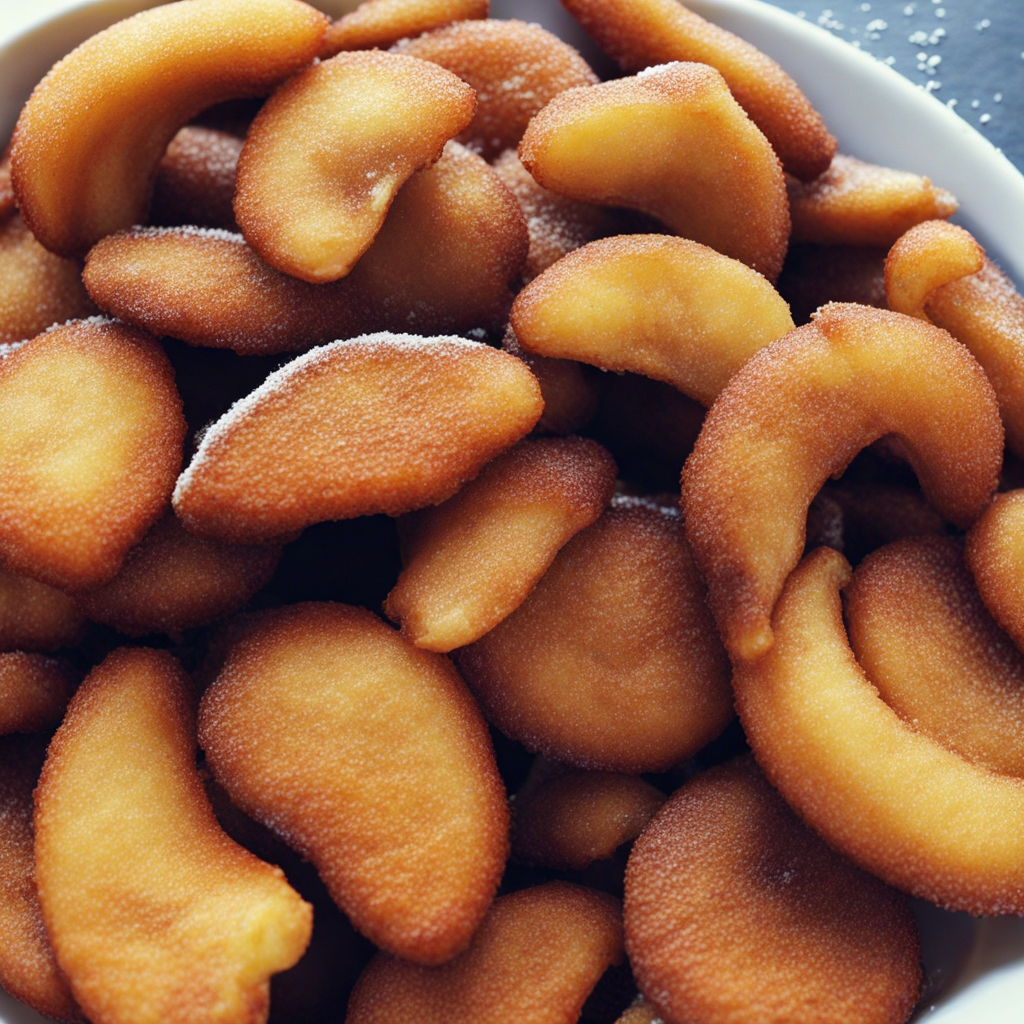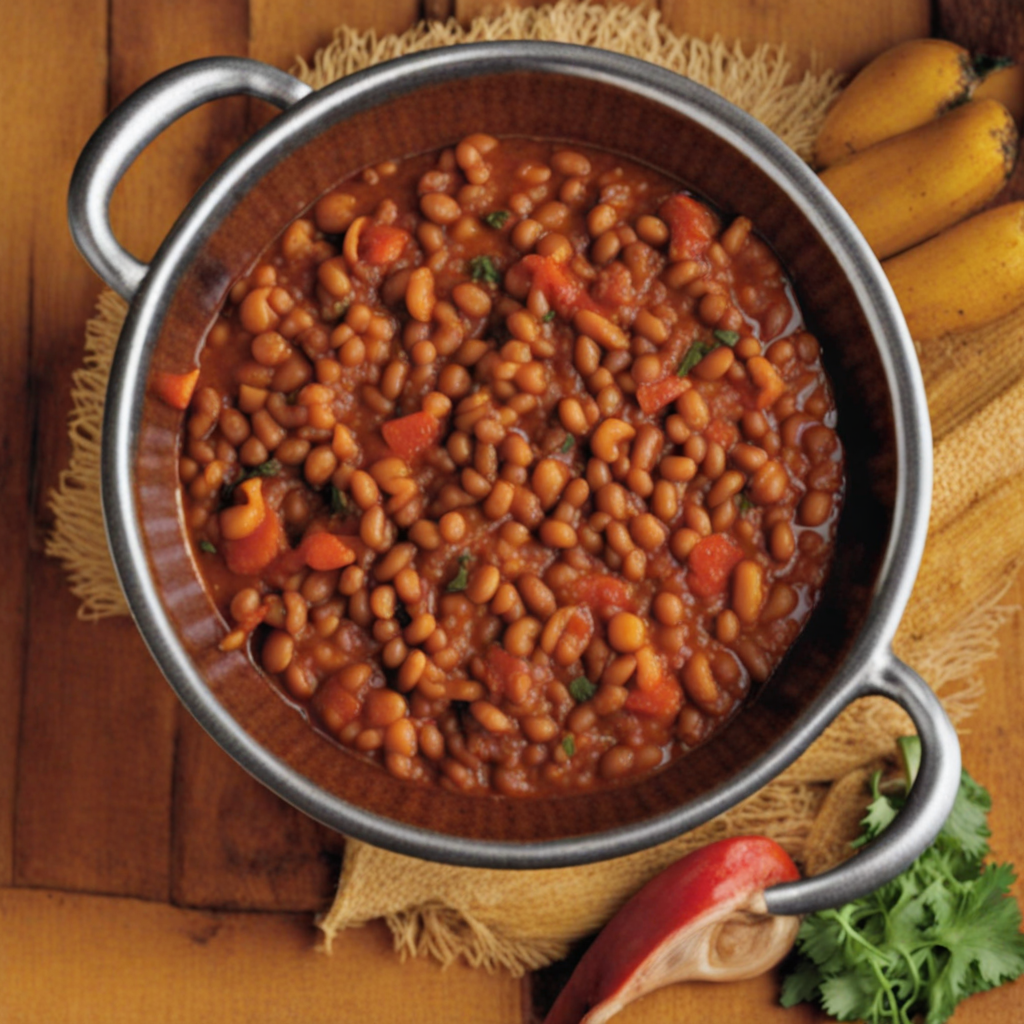Light Soup
Light Soup, a cherished dish from Ghana, is a flavorful and aromatic soup that often serves as a comforting staple in many households. This dish is known for its light, yet rich broth that is typically made from a blend of fresh tomatoes, onions, and peppers, simmered to perfection. The use of local spices, such as ginger and garlic, adds depth to the flavor profile, making each spoonful a delightful experience. The soup is often prepared with a variety of proteins, such as fish, chicken, or goat, infusing the broth with savory notes and enhancing its overall richness.
The texture of Light Soup is notably smooth and inviting, thanks to the blending of the tomatoes and other ingredients into a velvety consistency. Unlike heavier stews, Light Soup is designed to be refreshing, making it an ideal choice for those looking to explore something new yet comforting. The vibrant color of the soup, ranging from bright red to a deep orange, reflects the freshness of the ingredients, promising a tantalizing taste that is both invigorating and satisfying.
How It Became This Dish
Nkrakra: A Culinary Treasure of Ghana #### Origin and Ingredients Nkrakra, a beloved dish from Ghana, is an emblematic representation of the rich culinary heritage of the Akan people, particularly the Ewe and Fante ethnic groups. The term "nkrakra" translates to "the food that brings people together," which aptly reflects its role in communal gatherings and celebrations. The dish is primarily made from fermented corn dough, which is mixed with palm oil, spices, and sometimes fish or meat. The fermentation process enhances the flavor profile of the corn, while the addition of palm oil not only adds richness but also serves as a nod to the West African tradition of incorporating oil as a base for many dishes. The inclusion of local spices such as ginger, garlic, and chilies imbues Nkrakra with a distinctive taste that speaks to the region’s affinity for bold flavors. #### Historical Context The history of Nkrakra is intertwined with the agricultural practices of the Akan people. Corn, or maize, was introduced to West Africa by European colonizers in the 16th century. As it gained acceptance, it became a staple crop across the region, leading to the development of various dishes, including Nkrakra. The fermentation technique used to prepare the corn dough is a traditional method that likely has roots in ancient practices of food preservation and flavor enhancement. Over the centuries, Nkrakra has evolved, reflecting the changing landscapes of Ghanaian society. During the transatlantic slave trade, many culinary practices were disrupted, but the resilience of the Akan people allowed them to adapt and preserve their food traditions. Nkrakra is a testament to this culinary resilience, as it has retained its core ingredients and preparation methods while also adapting to incorporate new influences. #### Cultural Significance Nkrakra holds significant cultural importance in Ghana, symbolizing community, hospitality, and shared experiences. It is often served during festive occasions such as weddings, naming ceremonies, and traditional festivals. The act of preparing and sharing Nkrakra is a communal affair; families and friends gather to cook, eat, and celebrate together, reinforcing social bonds. In Ghanaian culture, food is a medium through which stories and traditions are passed down from generation to generation. Nkrakra is not just a dish; it embodies the history and identity of the Akan people. The preparation of Nkrakra often involves storytelling, where elders share tales of the past while the younger generation learns about their heritage. This intergenerational exchange is crucial in maintaining cultural continuity. The dish also plays a role in ritual practices. In some communities, Nkrakra is prepared as part of offerings to ancestors or deities, signifying respect and gratitude. This spiritual connection to food is a hallmark of Ghanaian culture, where meals are often viewed as sacred and imbued with spiritual significance. #### Development Over Time As Ghanaian society has evolved, so too has Nkrakra. The dish has adapted to contemporary lifestyles and tastes, incorporating modern cooking techniques and ingredients. For instance, while traditional preparations involve the use of clay pots over open fires, many households now utilize electric stoves and modern cookware, which can alter the texture and flavor profile of the dish. Moreover, globalization has introduced new ingredients and culinary techniques to Ghanaian cuisine. As a result, Nkrakra is now often served with a variety of accompaniments, including stews, fried plantains, or grilled meats. This adaptability has allowed Nkrakra to remain relevant in the fast-paced modern world while still honoring its roots. In recent years, there has been a resurgence of interest in traditional Ghanaian foods, spurred by a growing awareness of the importance of culinary heritage and local ingredients. Chefs and home cooks alike are embracing Nkrakra, often experimenting with innovative presentations and combinations that highlight the dish’s versatility. This culinary renaissance has also been supported by initiatives aimed at promoting local agriculture and sustainable food practices, ensuring that the ingredients used in Nkrakra are sourced locally and sustainably. #### Nkrakra in the Global Context As Ghanaian cuisine gains international recognition, Nkrakra has found its way into global culinary circles. Food festivals, restaurants, and culinary schools have begun to showcase traditional Ghanaian dishes, and Nkrakra is often highlighted as a quintessential example of Ghanaian culinary art. This exposure has not only increased appreciation for the dish but has also sparked curiosity about its origins and cultural significance. Social media platforms have played a significant role in this culinary revolution. Food bloggers and influencers are sharing recipes and cooking tutorials for Nkrakra, making it accessible to a wider audience. This digital engagement has fostered a community of food enthusiasts interested in exploring the flavors of Ghana and incorporating them into their kitchens. Additionally, diaspora communities have also contributed to the global spread of Nkrakra. As Ghanaians migrate to different parts of the world, they carry their culinary traditions with them, often adapting recipes to suit the ingredients available in their new environments. This cross-cultural exchange enriches the dish, allowing it to evolve and resonate with diverse audiences. #### Conclusion Nkrakra is more than just a dish; it is a vibrant representation of Ghanaian culture, history, and community. Its origins rooted in agricultural practices and communal living reflect the resilience and adaptability of the Akan people. As Nkrakra continues to develop and find its place in both local and global contexts, it serves as a reminder of the importance of food in shaping identity, fostering connections, and preserving cultural heritage. As we savor Nkrakra, we are not merely indulging in a meal; we are partaking in a rich tapestry of history, culture, and community that transcends borders and generations. It is a dish that brings people together, nourishing both body and soul—a true culinary treasure of Ghana.
You may like
Discover local flavors from Ghana







